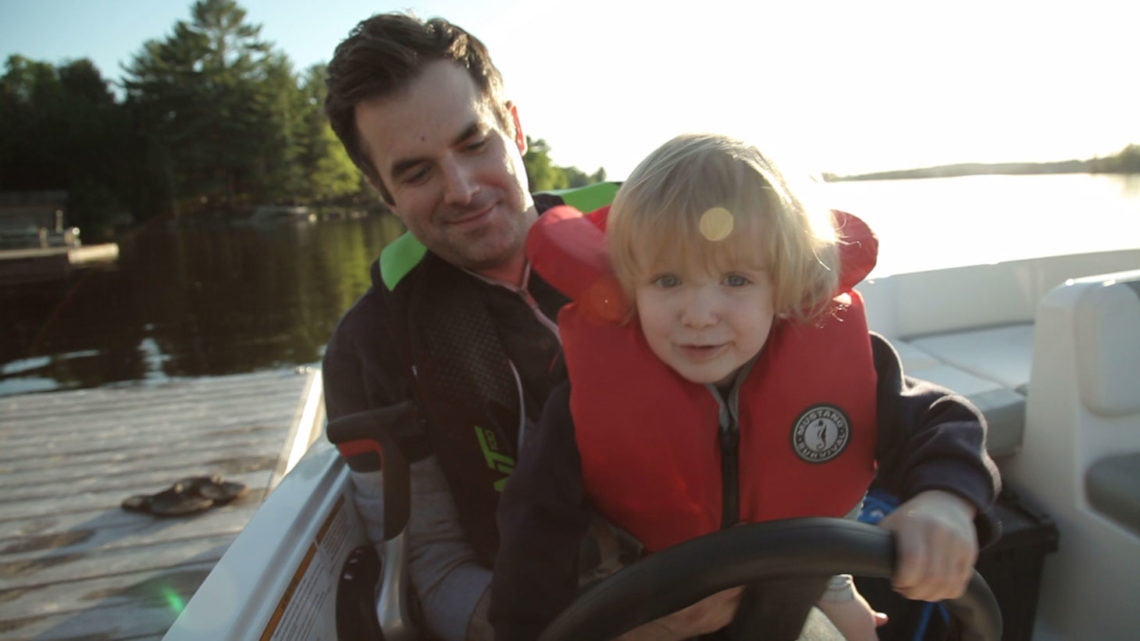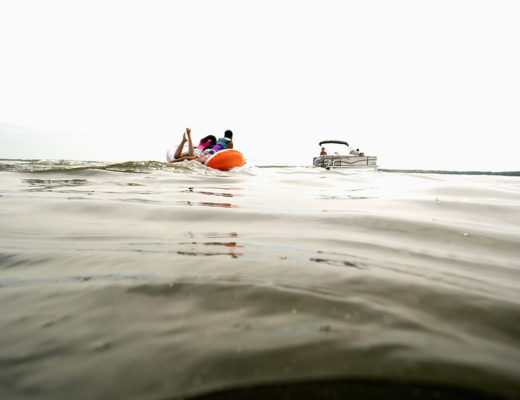Safety is everything. When boating, it all starts with wearing the right life jacket.
At BOATsmart!, we’re all about having lots of fun on the water — and doing it safely. New York State is one of those places waiting for boats and watersports, especially in the summers when the water is warmer. With thousands of miles of waterfront, rivers, and lakes in the state, boaters in New York have quite a special opportunity for water fun.
But, while nothing compares to a great New York boat day, jet ski excursion, or relaxing float, none of it matters without a focus on safety at every step. One of the most vital parts of water safety that no one should forget? The importance of wearing a life jacket every single time you are out on the water.
Here is everything you need to know about New York state’s life jacket law.
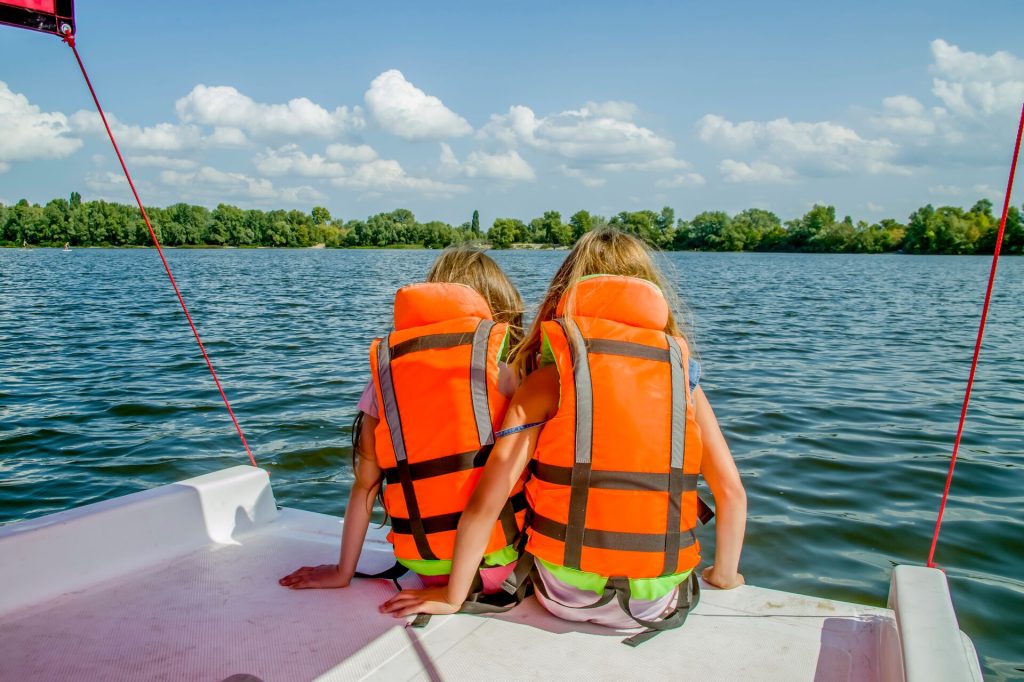
Who is Required to Wear a Life Jacket in New York?
New York also has laws requiring all boat operators to have a boating education certificate by 2025 and laws regarding the use of life jackets.
In New York, the following people are required to wear a life jacket:
- Children under the age of 12
- Anyone, regardless of age, operating or riding on a personal watercraft such as a jetski, Wave Runner, or similar
- Anyone, regardless of age, being towed behind another vessel (parasailing, tubing, etc.)
- Anyone, regardless of age, riding in a pleasure vessel that measures less than 21 feet (such as rowboats, canoes, or kayaks) between the periods of November 1st through May 1st each year (when the water is coldest)
Following New York State life jacket law helps keep everyone safe while boating or participating in water activities.
Are There Exceptions to New York Life Jacket Laws?
In these situations, life jackets are not required to be worn:
- Children under the age of 12 that are in a fully enclosed cabin
- Anyone on a disabled vessel that is being towed
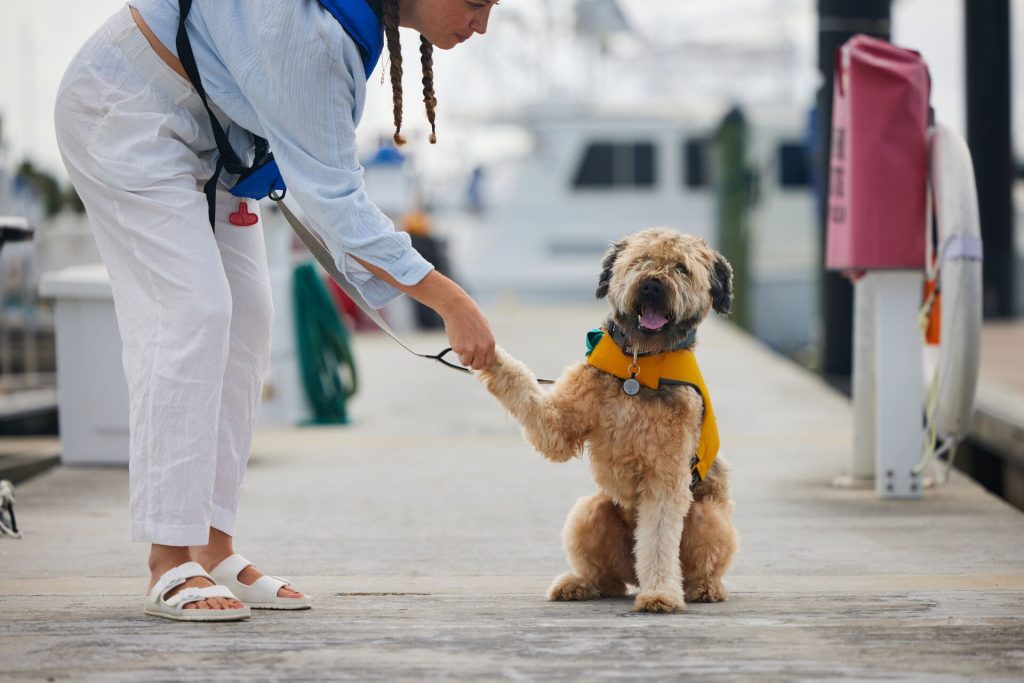
Why Should I Wear a Life Jacket?
While everyone may not legally be required to wear a life jacket in New York, there are safety advantages to wearing one. If the temperature changes (water can get very cold in New York!), the current changes, or hidden hazards arise, even the best swimmer can benefit from wearing a life jacket.
According to the National Park Service, the top cause of death in national parks is drowning. Most drowning deaths occur close to shore and within proximity to a life jacket. The NPS recommends that everyone wear a life jacket, regardless of the water activity. By ignoring safety precautions, you are putting yourself and others at risk.
For pet owners: If you bring your pup on board, make sure it is also protected. Animal life jackets are a great investment for your pet and a surefire way to ensure safety.
Who Enforces Life Jacket laws?
In New York State, the Marine Law Enforcement division of the Office of Parks, Recreation & Historic Preservation enforces laws on the water. Whether enforcing life jacket usage or checking for boat registration, Marine Law Enforcement keeps New Yorkers safe on the water.
Violation of New York State life jacket law can result in a fine of $25-$100.

Life Jacket Requirements in New York
New York State life jacket law requires wearers to use Coast Guard-approved life jackets, which must be available to each boat passenger. Appropriate life jackets should be the right size for the wearer, readily accessible, and maintained in good condition.
All life jackets must be:
- Serviceable: fully functional and free of rots, tears, punctures, rips, etc.
- Readily accessible: each person on board should know where to find their life jackets, and they should be easy to get ahold of
- The appropriate size for everyone on board
What Are the Different Types of Life Jackets?
Life jackets — which used to fall in the category of Personal Flotation Devices (PFDs) in the states — come in several classifications, which have changed and evolved. While the classification process is now different, life jackets classified by type are still allowed and approved by the Coast Guard as long as they’re in good condition.
Knowing the different classifications will help you choose the perfect life jacket for your needs.
Old U.S. Life Jacket Terminology
Though now known as the old labeling system, types were considered a great way to label life jackets in the past. Life jackets and PFDs with these older labels — the type labels — are still okay to use and are approved, but they are being phased out and replaced with new labels as time goes on.
- Type I PFDs (Inherently Buoyant): Type I Personal Flotation Devices are suitable for every kind of water condition, from the calmest of waves to the roughest of waters. They’re not a lightweight type of life jacket, but their bulkier build makes them incredibly buoyant. When wearing a Type I PFD, most unconscious individuals will be turned face-up.
- Type II PFDs (Near-Shore Vests): Type II PFDs are meant for wearers who will be boating close to shore in locations where there is a high chance of a quick rescue. Type II PFDs are also wearable for long days of water and land adventures, but they are still buoyant and not super bulky.
- Type III PFDs (Flotation Aids): Also known as inshore buoyant vests, Type III PFDs are meant for situations in which the wearer can see the shore and the waters are relatively calm. They are designed with swimming, recreational boating activities, and water sports in mind.
- Type IV PFDs (Throwables): Type IV PFDs aren’t life jackets but are designed to be thrown to a person needing rescue in the water (such as a buoyant ring, a life ring, etc.).
- Type V PFDs (Special-Use Devices): Type V PFDs are specially designed for specific uses. From devices used to prevent hypothermia or rescue operations to those meant for kayaking, Type V PFDs must be used according to their specifications. Some of these devices are not approved for certain activities or must be worn to be approved for use.
New U.S. Life Jacket Terminology (Performance System)
While life jackets categorized by type are still approved for use as long as they’re in good condition, the new U.S. classification system for life jackets relies on performance categories.
Inherent Life Jackets
These devices are always buoyant (usually made of foam) and meant to float immediately without any action required by the wearer. They are adjustable, typically in vest form, and of an accessible price and maintenance standard.
Inherent wearable jackets come in various performance levels, making them a great choice for most activity levels and environments.
Inflatable Life Jackets
These devices inflate with air (usually with an installed gas canister) and are activated when the wearer pulls the tube to inflate them. Inflatables come in various performance levels but are never recommended for weak or non-swimmers, children, or those on personal watercraft.
These jackets are also low bulk until inflated, making them a great option for constant wear.
Hybrid or Multi-Chamber Devices
These devices combine inherent material like foam along with an inflatable chamber.
Hybrid devices typically perform with full buoyancy without inflation, and inflation adds additional performance that can sometimes even include turning and freeboard. However, hybrid wearers must be aware of the device’s ability to stand up to their performance.
For example, some of these devices do not offer maximum buoyancy until inflated.
Special Purpose
These devices are meant for specific activities or restricted circumstances and often require extra training or action by the wearer. This classification lends itself to extra buoyancy for white water rafting or provides additional visibility, as well as inflatable belt pouches or manual inflation devices.
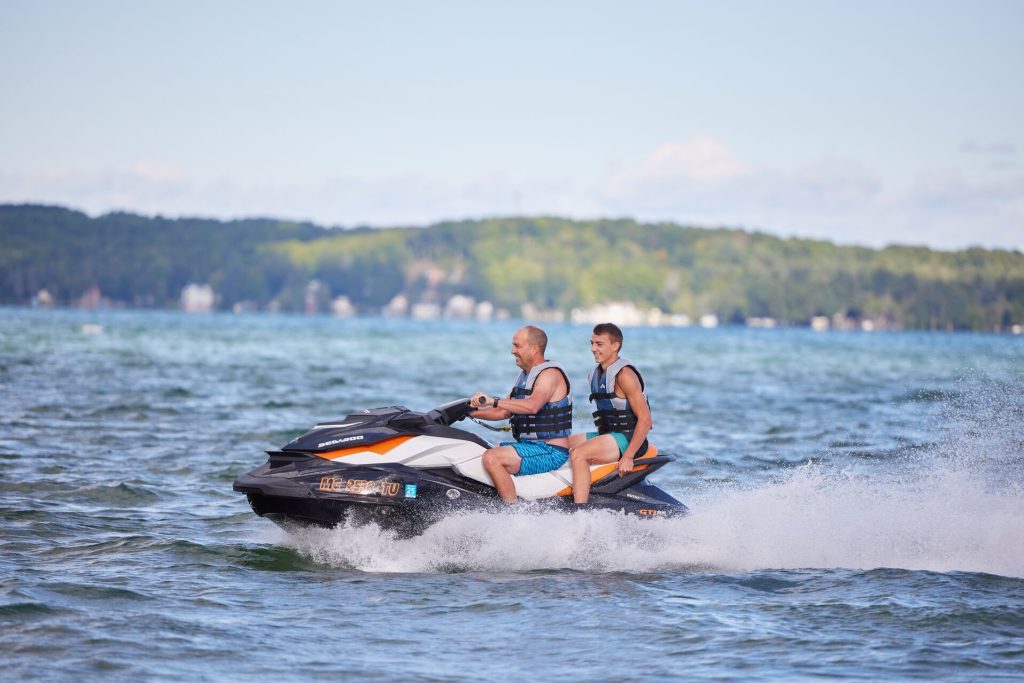
New Performance System Label Icons
New life jacket labels will feature an icon and number to indicate the intended conditions for use. The numbers range from Level 50 to Level 275, with smaller-level life jackets intended for use in calm water and close-to-shore scenarios and higher-level life jackets ideal for rougher waters and situations where rescue may take longer.
- Level 50: This performance level is recommended for users with strong swimming skills. It is best for close-to-shore scenarios where immediate assistance is available. Life jackets of this type will not turn the wearer face up in the water.
- Level 70: This level is recommended for calm or sheltered waters near shore and where help is nearby. They will not turn the wearer face up in the water.
- Level 100: This performance level is also recommended for use in calm waters. However, it will provide enough flotation that the wearer will have more time to wait for rescue. It has some turning ability but will not always turn the wearer face up.
- Level 150: Devices of this level are more buoyant are appropriate for off-shore scenarios, and will turn the wearer face up in the water.
- Level 275: Devices with a 275 rating are the most buoyant and are designed for offshore emergency rescue situations. They can be used by Search and Rescue (SAR) crews and will handle the additional weight of tools, equipment, or clothing.
New life jacket labels will also feature a warning panel. This panel will include important information about the device and its intended use, as well as activities that are not recommended for the device’s performance level, such as water skiing, towed sports, and personal watercraft operation.

How to Fit Life Jackets Properly
Life jackets should be snug, comfortable, adjustable, and unable to rise above the wearer’s ears. Each person should wear a life jacket meant for their size, weight, and body type and intended for the situation that the wearer will be in.
These keys will help you to adjust your life jacket properly:
- Put on a life jacket and make sure all pieces are fastened and zipped loosely, adjusting from there.
- After zipping up the life jacket, tighten from the bottom first and work your way up. Make sure that the bottom clasp is snapped in place.
- Adjust each side adjustment to make a snug fit, and keep them even so that your life jacket doesn’t ride up on one side.
- Tighten the shoulder straps last.
- Once adjusted, raise your hands above your head. If a life jacket rises above the wearer’s chin or feels incredibly tight, adjust it for another size. The wearer should be able to move comfortably in the life jacket.
When possible, do a fit test in the water. Float onto your back to ensure the life jacket doesn’t ride up, slip over your head, and keeps you afloat.
Life Jacket Best Practices
Life jackets must be adequately maintained to ensure they’ll work when needed, so it’s vital to take care of them. If you store and maintain your life jackets, they can last you for many seasons.
Here are our tips for storing and preserving life jackets so that they last:
- Wipe life jackets down with a gentle cleanser specifically made for life jackets.
- Store life jackets in a well-ventilated area and let them drip dry first.
- Check life jackets each season for any loose fastenings, rips, or tears.
Note: Do not lay jackets in direct sunlight or heat, as this can eventually affect their buoyancy.

Follow These Tips and New York State Life Jacket Law When Boating
Safety is everything to us at BOATsmart!. That’s why understanding New York State life jacket law is crucial before hitting the water.
Always make sure that every boat and personal watercraft operator around is legally — and responsibly — able to be on the water. In New York, almost every boater is legally required to have a valid New York boating license. In fact, by 2025, all persons of all ages will be required to have a valid license in New York.
By using BOATsmart! as your boating safety education provider, you’ll be prepared for any water adventure that comes your way. With animated and narrated lessons built to capture your attention and root in your memory, our courses are perfect for each and every age of boater. As a Coast Guard and NASBLA-approved boating educator, we’re the best choice for an efficient, accredited, and info-packed boating safety education course.
So, to learn more about boating safety and get your New York boating license, work your way through the BOATsmart! course for New York State! You’ll be (safely) on the water before you know it.
Originally published in May 2021. Content most recently reviewed and updated for accuracy and relevancy September 6, 2024.
